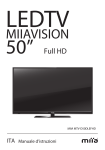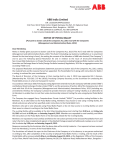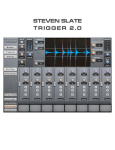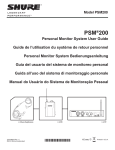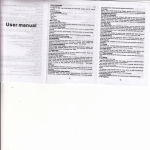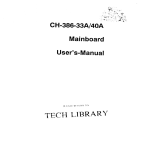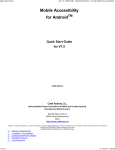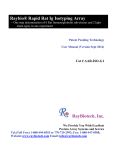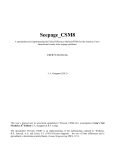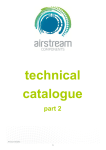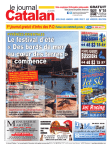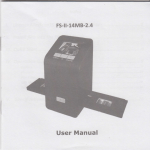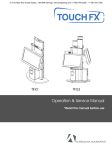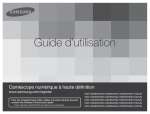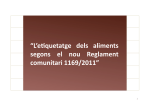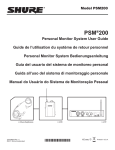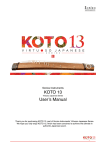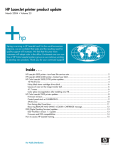Download PW-‐999UL User Manual
Transcript
PW-‐999UL User Manual Table of Contents Contents 1 . Parts Introduc2on Page 1 2 . Set Up Upon Arrival 2.1 – How to open and fold the Foldawheel 2.2 – Final check before usage 2.3 – Armrest and Footrest 2-‐5 3 . Opera2on 3.1 – Joys2ck and Controller 3.2 – How to Operate Your Wheelchair 3.3 – How to Convert to Power and Manual Mode 6-‐8 4 . Safety No2ce 4.1 – Before Driving 4.2 – While Driving 9-‐10 5 . Electromagne2c Interference (EMI) 11-‐13 6 . BaXery Charging and Care 6.1 – BaXery 6.2 – Charging The BaXery 14 7 . Specifica2on + Contact Us 15 1 . PARTS INTRODUCTION 1. 2. 3. 4. 5. 6. 7. 8. 9. 10. Joys2ck Controller Joys2ck Controller Knob BaXery Case Storage Bag Rear Wheel Front Wheel Armrest Backrest Seat Cushion Footrest 1 2 7 8 3 9 4 5 6 11. 12. 13. 14. 15. 16. 17. 18. 19. Push Handle Folding Lock Cable Control Box Hydraulic Shaa Lea Motor An2-‐2lt Support BaXery Connector Mode Converter Right Motor 10 11 12 13 14 15 16 17 18 19 Page 1 2 . SET UP UPON ARRIVAL 2.1 How to Open and Fold the Foldawheel When you take the wheelchair out of the box, remove the plas2c cover, and stand the wheelchair as shown. Follow the 3 steps below. Step 1: Hold the boXom of seat and push the footrest to its widest open posi2on. Page 2 Step 2: Hold the aluminum bar at the boXom of the seat cushion to ensure the wheelchair does not drop down (P1). Remember, once the front por2on of the wheelchair drops, or the footrest is gecng close to the seat, it will go into a locked posi2on. If this happens and you cannot open the wheelchair, kindly follow Step 1 again. Use one hand to hold the backrest handle (P2), while the other hand is suppor2ng the front part of the seat, which is res2ng on the front wheel gently, as shown. P1 P2 Step 3: Pull the backrest handle up. When you pull the handle, con2nue to hold the boXom part of the seat with your other hand (P3). P3 Page 3 The wheelchair should now be open. The Joys2ck Controller should be facing downward when you take the wheelchair out of the box. This protects the joys2ck controller from damage during shipping. When folding the wheelchair and placing it in the trunk of a car, or when traveling by plane, we suggest that you turn the joys2ck controller downward to avoid damage. v While sicng on the wheelchair, please rotate the joys2ck controller clockwise to ensure the joys2ck controller cable is placed to the side of the armrest. Turning it in the wrong direc2on may cause the cable to catch underneath the armrest and not allow the joys2ck controller to rotate properly into place. v Adjust the joys2ck controller to its upward posi2on and lock it 2ghtly. For your own safety, make sure that the joys2ck controller always stays in a locked posi2on while opera2ng the wheelchair. v Connect the joys2ck controller with the cable as shown in P4, and push up the lock, as shown in P4. Turn the lock clockwise to lock it (P5). P4 P5 2.2 -‐ Last check before usage: Please ensure the folding lock cable is in the locked posi2on before driving. When you pull the folding lock cable, the locking mechanism will open (P6). Once the folding lock cable is released, it will return to the locked posi2on (P7). P6 P7 Page 4 ü û WARNING: The lock at both ends of the folding lock cable must be secured carefully before opera2ng the wheelchair. Make sure the ends of the folding lock cable are securely locked on both sides. 2.3 -‐ Armrest and Footrest v By pulling the black latch underneath the armrests, the armrests can be raised up for easier transfer to a bed or chair. Raising the armrests also allows the user to get closer to a table while dining. Make sure it is in the locked posi2on again aaer you lower the armrest to its res2ng posi2on. v The footrest is designed to be strong enough to support the weight of the user. The footrest can be folded inward, so the user can stand and transfer easier. This also allows the user to put his/her feet directly on the ground if desired when not opera2ng the wheelchair. Page 5 3 . OPERATION 3.1 JoysVck and Controller 1. 2. 3. 4. 5. 6. 7. 8. 9. On/Off BuXon Factory Maintenance BuXon BaXery Strength Indicator Speed Indicator Increase Speed Decrease Speed Horn Joys2ck Maintenance Light 1 2 6 7 3 4 5 9 8 3.2 How to operate your power wheelchair Turn on the power to the wheelchair by pressing the On/Off buXon, DO NOT MOVE THE JOYSTICK UNTIL THE POWER IS ON. Speed control Increase and Decrease Bu]on v Press the “ + ” buXon on the joys2ck controller to increase the speed. Press the “ -‐ ” buXon on joys2ck controller to lower the speed. v Speed Indicator Level 1 is the lowest speed, and Level 5 is the highest speed. Every 2 lights represents 1 level. Warning: We recommend that you become thoroughly familiar with the operaVon of your Foldawheel PW-‐999UL before you increase the speed seXng from level 1 to a higher speed level. v On/Off Bu]on The On/Off buXon provides power to the electronic control system, which in turn supplies power to the wheelchair’s motor. Do not use the ON/OFF buXon to stop the wheelchair unless there is an emergency. The joys2ck controller will automa2cally turn off the power aaer 15 minutes of inac2vity. Sugges2on: Please power off whenever wai2ng. To preserve energy. Warning: If you use the ON/OFF buXon to stop the wheelchair, it may shorten the life of the drive components. Page 6 v JoysVck The primary func2on of the joys2ck is to control the speed and direc2on of the wheelchair. The further you push or pull the joys2ck from the center posi2on the faster the wheelchair will move. When you release the joys2ck the brakes are automa2cally applied. There is a half second delay in the movement of the wheelchair for safety purposes. v Horn Bu]on Press the buXon to sound the horn. v Ba]ery Strength Indicator The baXery gauge shows you that the wheelchair is switched on. It also indicates the baXery capacity remaining in the baXery pack. However, it is not a propor2onal indica2on, so please charge the baXery when the green light on the baXery indicator disappears. v Factory Maintenance Bu]on The factory maintenance buXon is used for re-‐programming of the joys2ck controller. Pressing the buXon will not affect normal usage. v Lock / Unlock JoysVck Controller § To lock: When your joys2ck controller is powered on, press and hold the “on/off” for more than 5 seconds un2l the light turns off. You will see the baXery strength indicator blinking and running from right to lea. (The power will turn off automa2cally aaer a few seconds) § To unlock: Press the “on/off” buXon to turn on the joys2ck controller. Then press the “ + ” increase speed buXon 3 2mes. Page 7 3.3 How to Convert to Power and Manual Mode Pull the red levers (Up) to engage Power Mode. While in power mode, do not aXempt to push the wheelchair manually. § Push the red levers (Down) to use Manual Mode. To push the wheelchair manually, turn off the power using the joys2ck controller. § Although the wheelchair can be power operated in either mode, the user should use power mode only unless the wheelchair is being pushed. Warning: Opera2ng the wheelchair in Manual Mode disengages the brakes, so when using the wheelchair without someone assis2ng to push it, ALWAYS use Power Mode. § Manual Mode Power Mode Page 8 4. SAFETY NOTICE 4.1 Before driving The user should become readily familiar with this User Manual and the opera2on of this wheelchair before driving it outdoors. TO AVOID SERIOUS INJURY OR DEATH, please keep the following safety 2ps in mind at all 2mes: v Driving environment. § Drive straight up and down a ramp, slope, curb or any uneven surface. § Do not drive up or down hills that are too steep. § When approaching a curb, or any uneven surface, stop a few inches in front of it and then slowly drive the wheelchair from the stopped posi2on up the curb or surface. § Do not drive your wheelchair aaer consuming alcohol, or when you feel 2red. § This wheelchair has been designed to operate on dry pavement at speeds up to 7km/h (4.3 mph). § Drive on even pavement and marked pedestrian areas only. v PracVce operaVng your power wheelchair at home. § Turn the speed dial to the lowest secng for ini2al use. Only increase the speed secng when you are confident that you can easily operate and control the wheelchair. § Be sure someone accompanies you for safety when opera2ng your wheelchair for the first 2me. v Do not use this wheelchair to carry or haul goods. v The maximum weight capacity is 220 lbs with center of gravity in a seated posiVon. If the user exceeds 220 lbs, this wheelchair is not recommended for use. Page 9 4.2 While Driving § § § § § § § § § § § § § § Do not aXempt to get out of the wheelchair while it is moving as doing so may cause serious injury or death. Pay close aXen2on to avoid any loose clothing gecng caught in the wheels, or catching on the joys2ck controller. It is further recommended that you follow these warnings. Do not get in or out of your wheelchair unless the power is off. Do not drive on roads with heavy traffic. Do not drive in rain, snow or icy condi2ons. Do not drive your wheelchair in an “S” paXern, or make erra2c turns, as this could cause the wheelchair to flip over. Do not take the wheelchair onto escalators. Do not drive onto ramps that are steeper than the specified gradient. Always use a low speed secng when ascending or descending a hill. Do not make turns when driving on gravel roads or ramps. Always lean forward when climbing a steep hill, and lean backwards when going down hill. Release the joys2ck control lever completely and the wheelchair will come to a stop. Do not turn the power OFF from the joys2ck controller un2l you have come to a complete stop. WARNING! § Do not set the wheelchair in Manual Mode when ascending or descending a hill. Always engage the Power Mode before using the wheelchair alone. § Exceeding the weight capacity of the wheelchair may lead to damage to your wheelchair, cause it to malfunc2on, or endanger your own safety. The warranty does not cover this type of damage. § Avoid pucng all of your weight and standing on the footrest. This may cause the wheelchair to 2p and possibly result in serious injury. § Do not turn the power switch to OFF while driving, as this will lead to an emergency stop and possibly result in serious injury. § Do not set to higher speeds while driving indoors. § Beware of people and objects at all 2mes while opera2ng your wheelchair. § Do not adjust the speed while driving. A sudden change in speed may cause injury to you and/or others, or damage to your wheelchair. § Do not place magne2c devices near the wheelchair as this could affect its safe opera2on. Page 10 5. ElectromagneVc Interference (EMI) This sec2on provides the user with basic informa2on that describes the problems with electromagne2c interference (EMI), known sources of EMI, protec2ve measure to either lessen the possibility or exposure or to minimize the degree of exposure, and suggested ac2on should unexpected or erra2c movement occur. AXen2on : It is very important that you read this informa2on regarding the possible effects of electromagne2c interference on your PW-‐999UL v ElectromagneVc Interference (EMI) from Radio Wave Sources Powered wheelchair’s may be suscep2ble to electromagne2c interference (EMI), which is interfering electromagne2c energy (EM) emiXed from sources such as radio sta2ons, TV sta2ons, amateur radio (HAM) transmiXers, two-‐way radios, and cellular phones. The interference (from radio wave sources) can cause the power wheelchair to release its brakes, move by itself, or move in unintended direc2ons. It can also permanently damage the power wheelchair’s control system. The intensity of the interfering EM energy can be measured in volts per meter (V/m). Each power wheelchair can resist EMI up to a certain intensity; this is called its “immunity level”. The higher the immunity level, the greater the protec2on. At this 2me, current technology is capable of achieving at least a 20 V/m immunity level, which would provide useful protec2on from the more common sources of radiated EMI. This power wheelchair PW-‐999UL has been shipped with no further modifica2on and with an immunity level of 20 V/m without any accessories. There are a number of sources of rela2vely intense electromagne2c fields in the everyday environment. Some of these sources are obvious and easy to avoid. Others are not apparent and exposure is unavoidable. However, we believe that by following the warning listed below, your risk to EMI will be minimized. Page 11 The sources of radiated EMI can be broadly classified into three types : 1. Hand-‐held portable transceivers ( transmiXer-‐receivers with the antenna mounted directly on the transmicng unit. Examples include: ci2zen band (CB) radios, “walkie talkie”, security, fire, and police transceivers, cellular telephones and other personal communica2on devices. AXen2on : Some cellular telephones transmit signals while they are ON, even when not being used. 2. Medium-‐range mobile transceivers, such as those used in police cars, fire trucks, ambulances and taxis. These usually have the antenna mounted on the outside of the power wheelchair. 3. Long-‐range transmiXers and transceivers, such as commercial broadcast transmiXers (radio and TV broadcast antenna towers) and amateur (HAM) radios. AXen2on : Other types of hand-‐held devices, such as cordless phones, laptop computers, AM/FM radios, TV sets, CD players, casseXe and small appliances such as electric shavers and hair dryers are not likely to cause EMI problems to your power wheelchair. v Power Wheelchair ElectromagneVc Interference (EMI) Because EM energy rapidly becomes more intense as one moves closer to the transmicng antenna (source), the EM fields from hand-‐held radio wave sources (transceivers) are of special concern. It is possible to uninten2onally bring high levels of EM energy very close to the power control system of the power wheelchair while using these devices. This can affect the power wheelchair movement and braking. Therefore, the warnings listed below are recommended to prevent possible interference with the control system of the power wheelchair. v Warnings Electromagne2c interference (EMI) from sources such as radio and TV sta2ons, amateur radio (HAM) transmiXers, two-‐way radio, and cellular phones can affect power wheelchairs and motorized power wheelchairs. Following the warnings listed below should reduce the chance of unintended brake release or power wheelchair movement which could result in serious injury. 1. Do not operate hand-‐held transceivers-‐receivers, such as ci2zen band (CB) radios, or turn ON personal communica2on devices such as cellular phones, while the power wheelchair is turned ON. Page 12 2. 3. 4. 5. Be aware of nearby transmiXers such as radio or TV sta2ons, and try to avoid coming close to them. If unintended movement or brake release occurs, turn the power wheelchair OFF as soon as it is safe; Be aware that adding accessories or components, or modifying the power wheelchair, may make it more suscep2ble to EMI (Note: There is no easy way to evaluate their effect on the overall immunity of the power wheelchair). Report all incidents of unintended movement or brake release to the powered power wheelchair manufacturer, and note whether there is a source of EMI nearby. v Important InformaVon 1. 2. 20 Volts per meter (V/m) is a generally achievable and useful immunity level against EMI (the higher the level, the greater the protec2on) This product has an immunity level of 20 V/m without any accessories and connected to it. Page 13 6. BATTERY CHARGING AND CARE 6.1 Ba]ery v The baXery pack in the Foldawheel PW-‐999UL is made of Polymer Li-‐ion cells, more advanced than the standard Li-‐ion baXery pack, or the tradi2onal Lead-‐Acid baXery. Not only is it a high capacity baXery in such a small size, it is also very lightweight, durable and long las2ng. v One baXery pack allows the user to operate the wheelchair for approximately 13km (8 miles). There is an op2on to purchase a second baXery which allows the user to operate the wheelchair for approximately 26 km (16 miles). 6.2 Charging the Ba]ery v The Foldawheel comes with a 24V 2A charger. It is made with high quality components and has passed all of the required standards and tests. Once you connect to a power source, the LED indicator will illuminate. Red : Connected to power source Yellow : Start Charging Green : Charging completed ATTENTION :This charger only works with equipment with the following criteria: • 24V • Li-‐ion baXery equipment only • A similar charging connector Page 14 ! 7. SPECIFICATION Net Weight with 1 standard battery pack Max Speed Maximum Seat Capacity Seat cushion Width Armrest Width (equivalent seat width) Seat Depth Seat Height From Ground (Front) Seat Height From Ground (Back) Turning Radius Folded Size Opened Size Packing Size Max Distance / Full Charge (on flat surface without stops) Charge Time (for 1 battery) Slope Capability Battery Type Battery Capacity Motor Type Motor Power Front Wheel Rear Wheel Frame Material Rear Tire Type Armrest Footrest Backrest 20.5 kg (45 lbs) 7 km/hr (4.3 miles/hr) 100kg (220 lbs) 40cm (16”) 46cm (18") 40cm (16”) 49cm (19.3”) 47cm (18.5”) 75cm (29.5”) 30cm (L) x 71cm (H) x 62cm (W) 11.8” (L) X 28” (H) X 23.6” (W) 87cm (L) x 85cm (H) x 60cm (W) 34.3” (L) X 33.5” (H) X 24.4” (W) 35cm (L) x 78cm (H) x 64cm (W) 13.8” (L) X 30.7” (H) X 25.2” (W) 13km (8 miles) with standard battery 26 km (16 miles) with Optional 2nd battery 5 hours 15˚ Soft Pack Polymer Li-Ion Battery 24V 6Ah Latest Brushless Motor 150W x 2 7” 8” Aircraft Quality Aluminum Alloy Rigid PU tire Raisable Foldable Foldable Page 15 CONTACT US HQ : No.67, Jalan Mahogani 5, Bandar Botanic, 41200 Klang, Malaysia Phone: +60-‐3-‐33183133 One Raffles Quay North Tower, Level 25, Singapore 048583 Phone: +65-‐6622 5585 3/F, 4-‐1-‐1 Ikeukuro Toshima-‐Ku, Tokyo Japan, 171-‐0014 Phone: +81-‐8031592311 535 North Puente St. Brea, CA 92821, USA Phone: (949)-‐291-‐2309 Official Website : wheelchair88.com Facebook Page : facebook.com/wheelchair88 Email : [email protected] Thank You

















